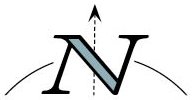« Summer Box Office Sizzle Continues | Main | International Box Office Strength »
August 15, 2007
Market Returns Since the All-Time Highs in July
The sell-off since the S&P 500 and Dow Jones Industrial Average made all-time closing highs on July 19th has been broad. All the major indices I track are down between 7% and 11%. I track these indices looking for divergences in returns that might be a clue to where leadership is emerging and whether prior leaders are turning to laggards. Given recent discussions on Wall Street about trends for large cap vs. small cap and growth vs. value, I thought a broad look returns since the market turned lower would be useful.
From the July 19th peak through the close on August 14th, the DJIA has fallen 6.9% making it the best performing major US index. The S&P 500 and NASDAQ are down by 8.1%, while the S&P 400 Midcap has fallen 9.4%. Within the market cap indices, the Russell 2000 has been the worst performer, declining by 10.5%. I see little predictive value in these returns as they strike me to be consistent with expectations given the greater volatility of the Mid Cap and Russell indices.
Looking at style, using the Russell 1000 and 2000 Growth and Value ETFs, there has been a slight edge for growth. Large cap growth is down 7% vs. an 8.9% decline for large cap value. The discrepancy in returns is larger in small caps style indices. The Russell 2000 Growth is down 8.8% vs. an 11.3% decline for the Russell 2000 Value. I suspect the carnage in small cap financial stocks accounts for the lagging performance of small cap value.
International markets have suffered similarly to the US markets. Based on the ETFs, the EAFE is down 8.9% while emerging markets (EEM) are down 11%, quite similar to small cap US. Japan has held up better, with the Nikkei 225 falling just 7%, but Japan had lagged the US and Europe in the weeks prior to the July 19th peak.
Posted by Steve Birenberg at August 15, 2007 01:56 PM in Market
1.THE MARKET OBVIOUSLY HAD A LARGE TURN AROUND ON THE FED'S DISCOUNT RATE DROP.SINCE THE OVERALL MARKET CORRECTION WAS 10% AND SINCE WE HAD TESTED THE FEBRUARY/MARCH 2007 LOWS,THIS IS A LOGICAL TIME FOR A RALLY.HOWEVER,SOME TECHNICAL EXPERTS FEEL IT IS LIKELY THAT WE ULTIMATELY WILL ENCOUNTER RESISTANCE AT APPROX.1450 AND WILL EVENTUALLY REACH NEW LOWS[BELOW1200].DO YOU THINK THIS IS A TIME TO BUY GOOD QUALITY STOCKS AT A LOWER PRICE OR WILL IT BE PRUDENT TO MAKE CASH RESERVES ON ANY SIGNIFICANT BOUNCE?
Posted by: mp at August 17, 2007 10:47 AMI think the answers to your questions depend on each individual's current portfolio, their investment objective, and their tolerance for risk. If you have a highly risky fully invested portfolio, it makes sense to use the bounce off the Fed news to raise some cash reserves. On the other hand, I have been nibbling at positions for clients that for one reason or another were too heavy in cash. I started that process when the market first brokedown in July and I have continued to make purchases right up until this morning.
All that said, I think the Fed has made it clear that is has changed its chance and will act quickly if things start to come unglued. I wouldn't view that as an all clear over the next few weeks but over the next few months and quarters it should mean the markets stabilize or rise from current levels. The Fed usually beats the trader but not always. For example from 2001-2003, the Fed was cutting constantly and the market performed poorly. I think this time the Fed is likely to win. We may go lower first but I'd bet we will be higher in six months. No guarantees.
Posted by: Steve at August 17, 2007 11:38 AM

